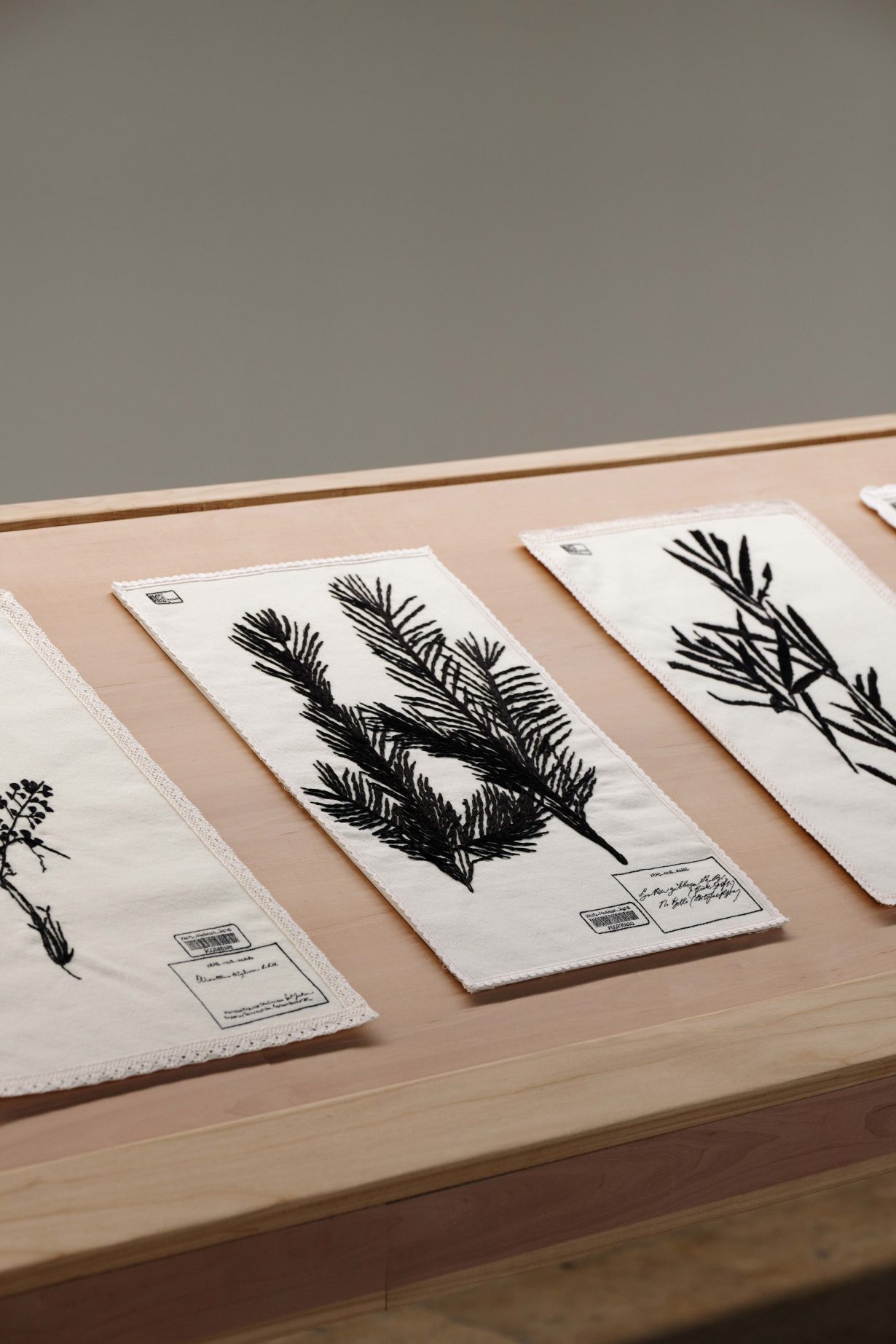The artist’s show at Artspace, Sydney highlights the historical extraction of Australia’s natural resources by its colonisers
On 19 October 1800, two ships – the Géographe and Naturaliste – set out from Le Havre in France; two years later they landed in Warrang (Port Jackson) in the Eora nation. Led by Nicolas Baudin and ordered by Napoléon, the expedition was propelled by the predictable colonial imperatives: ‘discovery’ and extraction. Aboard the ships were gardeners, mineralogists, botanists and zoologists who would achieve these purposes – which, in reality, meant the ripping of minerals, plants and animals from their homeland. By the time the ships returned to France in 1804, the expedition had amassed more than 200,000 dried and preserved specimens and objects, alongside 1,500 plant species and 3,872 animal species, including emus, dingoes, wombats, kangaroos and black swans. Of the live animals, 72 survived the trip. The specimens that returned to France were spread between the Muséum national d’Histoire naturelle, Paris, and Joséphine Bonaparte’s Château de Malmaison, west of the capital, and destined to become totemic curios of the South.
This event is critically revisited by Jonathan Jones in an exhibition that agitates and unsettles the smooth surface of Australia’s colonial history. The works on show here – which include meticulously embroidered woollen panels, reframed portraits of First Nation peoples, carved emu eggs, and 206 earthenware replicas of cultural objects that were originally taken to France but are now missing – all reach into history in an effort to reclaim what was taken. Indeed, at the heart of the exhibition is both a demand for restitution and act of healing. While it might be impossible to bring home the broad crosssection of living species and heritage objects misappropriated by the French expedition, the route that Jones’s exhibition travels – from its first presentation at the Palais de Tokyo to its current showing at Artspace – represents a repatriation of sorts.
This reversal finds its strongest expression in untitled (embroidered Eora country) (2021): a work comprised of 308 roughly A3-size wool panels, each of which have a plant species – taken by Baudin from the Eora/Sydney region – embroidered on their surfaces in black thread. Laid out across three tables that fill Artspace’s main exhibition hall, the visual impact is spectacular.
The panels were embroidered by Jones’s collaborators for this project – a group of Sydney-based migrant artists and artisans, in dialogue with Elders – who painstakingly attended to the idiosyncrasies of each plant, and whose presence added another layer of diverse cultural history and legacies of movement to the work. Each embroidery is based on photocopied records from the Muséum national d’Histoire naturelle and includes carefully reproduced notations, barcodes and handwritten descriptions that signal the crude imposition of European knowledge systems onto these plants. The implied violence of this latter practice is exposed by a nearby plaque that explains that ‘The transportation and translation of these plants was done without the consent of Australian Indigenous people, for whom plants are kin.’ Against this declaration, the subtle three-dimensionality and tactility of the sewn plants – which almost seem to grow out of their fabric substrate – suggest a living relationship that moves beyond the flat itemised institutional scan.

The materiality of untitled (remembering Eora) (2021) displaces the colonisers’ vision and their assumed position as the privileged representer of historical events. The work consists of engravings based on portraits of local Aboriginal people made by artist Nicolas-Martin Petit in 1802, which are hung on the wall in a row, each framed by a separate wreath composed of either scallop shells, gumnuts, emu eggs, brushtail possum fur or paper daisies. The individual materials reference the collections stockpiled by Baudin, while the wreaths recall the ancient Greek symbol for victory that Napoléon used to give historical weight to his imperial power. In reappropriating Napoléon’s own coopting of the wreath, untitled (remembering Eora) wrestles the power of narration away from Petit, deploying this symbol of colonial power as a proclamation of Aboriginal identity and reconnecting each of the sitters with the materials of Country. There is a sophistication to this retooling that turns the embedded history of Petit’s series of engravings upon itself, and in doing so centres First Nations perspectives.
This strategic reworking of historical material is echoed in Jones’s and Lille Madden’s (an Arrernte, Bundjalung and Kalkadoon woman from Gadigal Country) soundscape, untitled (corroboree) (2021), which reworks a musical score created by the French expedition in response to an Eora corroboree. The soundscape washes over the space, melding the sounds of a harp and piano with the sounds of Country: the lapping of the ocean and the songs of birds. The work finds particular resonance in the newly reopened halls of Artspace, whose expansive windows and light-filled galleries feel connected to its natural surroundings – a space in a permanent state of exchange with the outside world. People look in and the artworks look out.
untitled (transcriptions of country) transacts in a series of beautifully rendered poetic interventions and reparative acts that reach across time, bypass the barriers of the colonial archive and transcend the impossibility of retrieving lost cultural possessions. Coming shortly after the 2023 Australian Indigenous Voice referendum – which failed to pass and would have given First Nations Australians constitutional recognition and a new constitutionally enshrined representing body – its stakes could not be higher. The exhibition probes at how we understand the world and its history, but more than that, who gets to narrate this understanding. In direct opposition to the epistemological violence of colonialism, which is built upon singular authority and the unilateral extraction of ‘resources’, we find here a network of voices and hands unpicking and reworking the designs of the past.
untitled (transcriptions of country) at Artspace, Sydney, 15 December – 11 February
